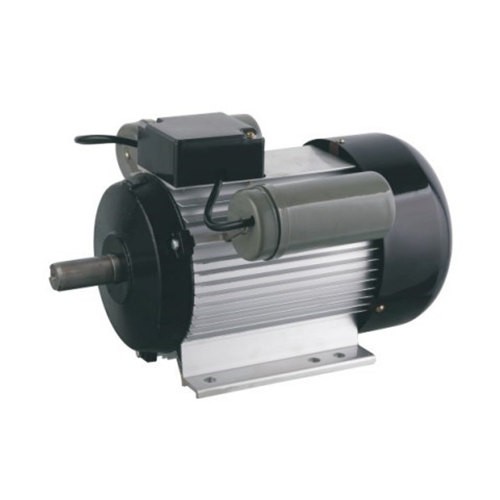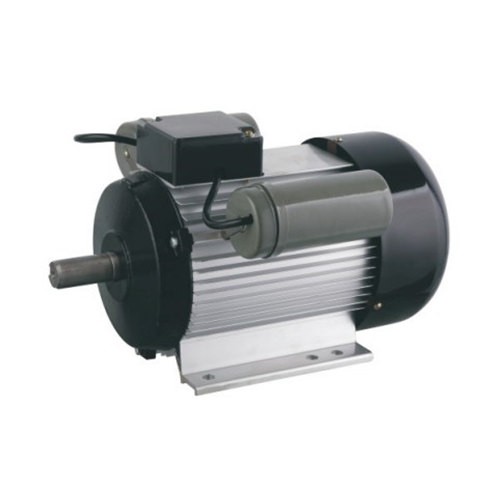As a reputable supplier of motors for air compressors, I often receive inquiries about the braking systems of these motors. Understanding the braking system is crucial for ensuring the safe and efficient operation of air compressors. In this blog post, I will delve into the details of the braking system of a motor for an air compressor, exploring its types, functions, and importance.
Types of Braking Systems for Air Compressor Motors
There are several types of braking systems commonly used in motors for air compressors. Each type has its own unique features and advantages, and the choice of braking system depends on various factors such as the application, the size of the motor, and the required level of braking performance.
Mechanical Brakes
Mechanical brakes are one of the most traditional types of braking systems used in air compressor motors. These brakes work by applying a mechanical force to the motor shaft to stop its rotation. Mechanical brakes can be further classified into two main types: friction brakes and electromagnetic brakes.
Friction brakes use friction between two surfaces to generate the braking force. One common type of friction brake is the drum brake, which consists of a drum attached to the motor shaft and brake shoes that press against the inner surface of the drum. When the brake is applied, the brake shoes are forced against the drum, creating friction and slowing down the motor.
Electromagnetic brakes, on the other hand, use an electromagnetic field to generate the braking force. These brakes typically consist of a coil and a brake disc. When the brake is energized, the coil creates an electromagnetic field that attracts the brake disc, causing it to press against a stationary surface and stop the motor.
Dynamic Brakes
Dynamic brakes are another type of braking system used in air compressor motors. These brakes work by converting the kinetic energy of the motor into electrical energy and dissipating it as heat. Dynamic brakes are often used in applications where the motor needs to be stopped quickly or where the load on the motor is variable.


One common type of dynamic brake is the regenerative brake, which uses the motor as a generator to convert the kinetic energy of the motor into electrical energy. This electrical energy can then be fed back into the power supply or dissipated as heat through a resistor.
Hydraulic Brakes
Hydraulic brakes are less common in air compressor motors but are sometimes used in applications where a high level of braking force is required. These brakes work by using hydraulic pressure to apply a force to the motor shaft. Hydraulic brakes typically consist of a hydraulic pump, a brake cylinder, and a brake pad. When the brake is applied, the hydraulic pump pressurizes the brake cylinder, causing the brake pad to press against the motor shaft and stop the motor.
Functions of the Braking System
The braking system of a motor for an air compressor serves several important functions. These functions include:
Safety
One of the primary functions of the braking system is to ensure the safety of the operator and the equipment. In the event of an emergency or a malfunction, the braking system can be used to quickly stop the motor and prevent any potential accidents.
Control
The braking system also allows for precise control of the motor's speed and position. By applying the brake at the right time, the operator can control the acceleration and deceleration of the motor, ensuring smooth and efficient operation.
Energy Saving
In some cases, the braking system can also help to save energy. For example, dynamic brakes can convert the kinetic energy of the motor into electrical energy and feed it back into the power supply, reducing the overall energy consumption of the system.
Importance of a Properly Functioning Braking System
A properly functioning braking system is essential for the safe and efficient operation of an air compressor. Here are some reasons why:
Preventing Overheating
If the braking system is not working properly, the motor may continue to run even when it is not needed, causing it to overheat. Overheating can damage the motor and reduce its lifespan, leading to costly repairs and downtime.
Avoiding Damage to the Equipment
A malfunctioning braking system can also cause damage to the air compressor and other equipment. For example, if the motor is not stopped quickly enough, it may cause the compressor to over-pressurize, leading to leaks, explosions, or other serious problems.
Ensuring Compliance with Safety Standards
Many industries have strict safety standards that require air compressors to be equipped with a properly functioning braking system. By ensuring that your air compressor's braking system is in good working condition, you can avoid any potential legal issues and ensure the safety of your employees and customers.
Our Products and Services
As a leading supplier of motors for air compressors, we offer a wide range of high-quality products that are designed to meet the needs of various applications. Our product portfolio includes Three Phase Motor for Screw Air Compressor, Electric Motor for Air Compressor, and Single Phase Motor for Air Compressor.
In addition to our products, we also provide comprehensive after-sales services, including installation, maintenance, and repair. Our team of experienced technicians is available to assist you with any questions or concerns you may have about your air compressor's motor or braking system.
Contact Us for Procurement and Negotiation
If you are interested in purchasing a motor for your air compressor or have any questions about our products and services, please do not hesitate to contact us. We are committed to providing our customers with the best possible solutions and look forward to discussing your specific requirements with you.
References
- "Motor Braking Systems: A Comprehensive Guide." Industrial Motor Handbook.
- "Understanding the Basics of Air Compressor Braking Systems." Compressed Air Best Practices Magazine.
- "The Importance of Proper Braking in Air Compressor Motors." Journal of Compressed Air Technology.





